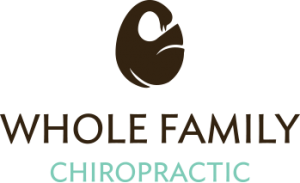Before & After:
Before care at Whole Family Chiropractic his work stress caused him to be short-tempered and tired when he returned home.
After care at Whole Family Chiropractic he was able to return home after a long day of work feeling clam, peaceful, and still have energy to play with his kids!
HEART RATE VARIABILITY
Heart rate variability is something used by cardiologists and exercise physiologists to measure the overall impact stress is having on your nervous system. These scans allow us to see a broader picture of your or your child’s neurological health – telling us whether your autonomic nervous system is healthy, balanced, and fully charged…or stressed out, imbalanced, and worn out.
More recently it has been shown that spinal cord tension affects this score, and therefore select chiropractors have integrated this measurement into their practice.
If you have had a persistent stress, your score will indicate a “fight or flight” response – as if your foot is always on the gas pedal. By moving you toward a more balanced state, your body can begin to heal and feel calm again. This test uses a sensor placed on your hand to measure your heart rate over a 3.5 minute period.
The key word here is “variability” because that is indeed the number one marker of good neurological health: the ability to be adaptable and resilient. Adaptability is the key to good health, whether talking about gut and immune health or behavioral, emotional, and cognitive health.
Every person will encounter bacteria, viruses, physical injuries, environmental toxins, and emotional challenges almost daily. So what we know about good health is that it’s not determined by avoiding or trying to hide from these things, but by being able to adapt and overcome them.
Many parents of kids often list one of their top goals for care to help their children be more ‘flexible’ and less dependent on strict, consistent routines. The HRV Scan is, therefore, a great one to help show why that is not the case for most kids starting out, but then it improves over time as the child gets neurologically-focused adjustments.
When we look at your family’s HRV scans, we’re looking for two very common findings that are the result of stress stuck on (subluxation) and an imbalanced nervous system (dysautonomia):
- The white dot is shifted left – meaning the patient is stuck predominantly in sympathetic fight-or-flight mode and/or has an exhausted parasympathetic nervous system and has vagal tone issues (their brake pedal is worn out)
- Shifted low – indicating the patient has lower ‘reserve capacity’ and adaptability, or “low energy” (no matter what they do they can’t seem to get back on track)
With the high-stress, high-demand ‘perfect storm’ world that most families are stuck in today, they often feel ‘wound up and worn out’ at the same time!
Just think of it like a toddler who skipped their nap on a busy day… by the time evening rolls around, you’ll have a fully exhausted child, throwing tantrums, not listening, and having a tough time.
In the same way that an infant doesn’t really grow out of colic but instead often grows into sensory and spectrum challenges…the same is true for the stress and tension seen on HRVs throughout the family. We don’t grow out of tantrums and behavior issues; we grow into ADHD, anxiety, and even depression.
The HRV Scans are the most helpful in sorting out what’s going on with our patients looking for drug-free help with mental and emotional disorders, sleep, energy, and so forth. Without these scans, we’d be chasing symptoms like most other medical approaches.


